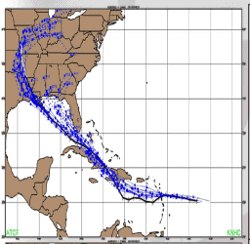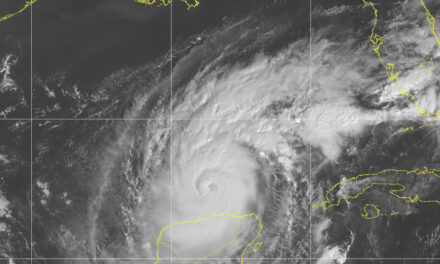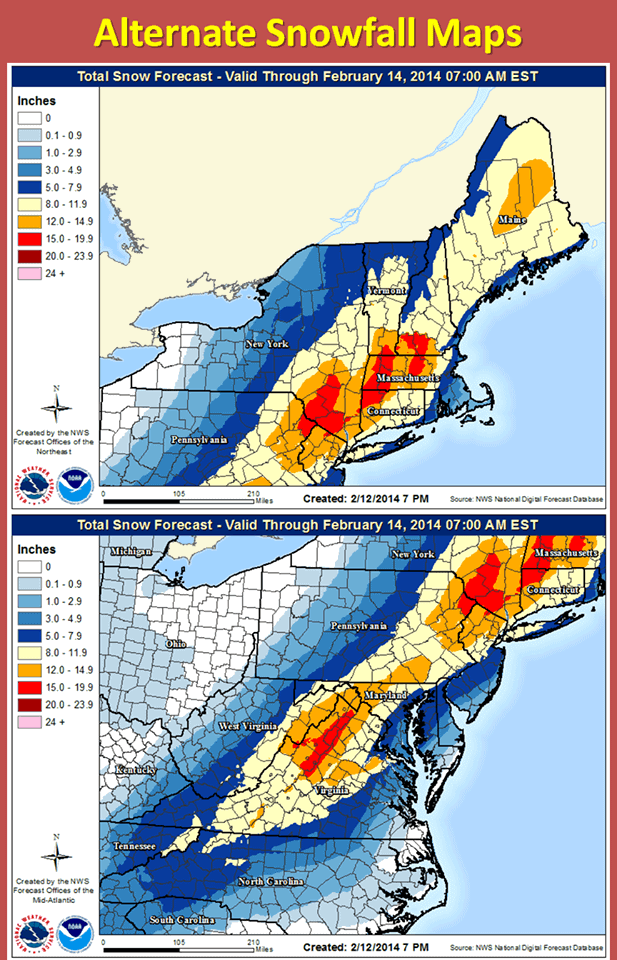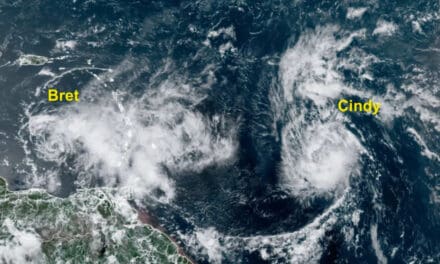Forecasting the weather is a difficult and laborious process, and it becomes more difficult as we try to look further into the future. A three-day forecast is usually considered quite reliable, and meteorologists provide us with three, five, and ten day outlooks that give us a good idea of what the future weather holds.
The National Oceanic and Atmospheric Administration (NOAA) supplies data to the National Hurricane Center which then forecasts the behavior of a tropical storm system. The National Weather Service, another NOAA agency, also plays a big part in the forecasting process.
Hurricane-hunter aircraft operated by the U.S Air Force and by the NOAA fly into a storm to gather data about the storm’s position, strength, size, and direction. Other aircraft drop instrument packages to determine factors such as steering winds and atmospheric conditions that surround the tropical cyclone. Satellites and ocean buoys also collect data.
The NOAA feeds the collected data into a wide array of computer models which predict the system’s behavior based on past storm behavior and current weather and ocean conditions across the hemisphere. Each weather system moving across the continent impacts the system ahead of it and behind it, and other weather systems over the Atlantic Ocean, Gulf of Mexico, and Caribbean Sea also affect hurricane strength and direction. They all combine to determine the path and strength of a tropical cyclone.
The hurricane experts at the NHC use the computer model forecasts to predict the hurricane’s path and issue warnings to specific regions if the storm is expected to make landfall or impact a coastal region. Other NOAA groups including the NWS use the same data to predict storm surge, wind force, tornadoes, and rainfall which help local authorities make evacuation decisions.
Using Hurricane Forecasts
Advance planning for hurricanes is a necessary part of living in Gulf or Atlantic coast regions. Hurricanes can come ashore anywhere along the Gulf of Mexico, the entire Atlantic Coast, and the Canadian Maritimes. Plans can be as simple as boarding up a house and going to stay with relatives until authorities give the all clear, or more elaborate plans that include keeping the power on with a generator and staying in your home.
If you live in the path of a hurricane, your best defense against loss of life is to leave for anyplace out of the hurricane’s reach. Inland flooding takes more lives than storm surges and hurricane force winds combined. Follow evacuation plans and leave well in advance of the storm, before roads become clogged or travel is impossible due to flooding.
Preparing for Hurricanes
The first plan to make is where to go if forced to evacuate. Make a list of what to pack and follow the list. Some people keep a “ready bag” to help them leave in a hurry. Buy supplies to board up windows and doorways in advance and store them until needed to avoid high prices and stores that run out of goods.
Keep a month’s worth of stored food and water on hand, especially during the hurricane season. As a hurricane approaches, prepare for power outages by performing preventative maintenance on your generator and replenish maintenance supplies of spark plugs, oil, filters, and other items. Check the battery and replace if necessary. Most standby generators will need servicing at least once a week, sometimes more often. A 100-hour service interval is just four days of non-stop running.
Prepare for fuel shortages and stock up on gasoline for your generator. It is not unusual for power outages to last a week or more, and even a month is not considered uncommon.
Local suppliers sell out their generators in the week before a storm hits. Portable generators usually need a manual transfer switch to supply a house with power, and standby units should be installed by electricians. Plan to purchase and install your emergency backup power generator now.
















